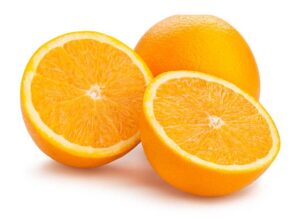- /
Onions are cultivated and consumed globally. Although normally served cooked, they can be eaten raw, pickled, or dried. The onion has a strong, sharp and pungent flavor. It is known as a temperate crop, but the versatility allows it to grow in a wide range of climatic conditions (temperate, tropical and subtropical). Currently, China is the largest onion producer in the world, producing 23,907,509 tons per year.
The benefits of onions extend beyond their texture, versatility, and taste. They are known as a nutrient packed vegetable containing powerful compounds that can decrease your risk of heart disease and certain cancers. Onions also have antibacterial properties and promote digestive health. This leads to improved immune function, maintaining blood sugar levels, soothing inflammation, and treating certain infections.
All this said, onions seem great, but why do they make me cry? When an onion is sliced or diced, the onion’s cells release compounds into the air. When this occurs, an “enzyme” works to alter the amino. This then turns into a form of sulfuric acid which irritates the nerves around the eyes making them tear.
Tip: One way to reduce the amount of chemicals released from the cell walls when slicing an onion is to use a sharp knife. This does not eliminate the problem, but having a sharp knife means fewer of the cells are broken/ and/or crushed as the knife goes through the onion, thus releasing less of the irritating chemicals.
Where did onions come from?
The Onion is thought to have originated more than 5000 years ago in Central Asia. Its consumption can be traced back to the Bronze Age. It is seen as the most ancient of food sources and a staple in the diet of many early civilizations. It was especially important to Egyptians.
FUN FACT: Ancient Egyptians saw onions as a symbol of eternal life because of their circular layers. Archeologist have even found onions in pharaohs tombs and many ancient Egyptian paintings.
Varieties of Onions
 Yellow (Spanish) Onions:
Yellow (Spanish) Onions:
These are large, sweet, juicy with an ivory flesh surrounded by heavy brown skin. They have a strong sulfur-like smell. Their flavor is mild and slightly sweet. These onions are typically used grilled as toppings on sandwiches and hamburgers or raw in salads.
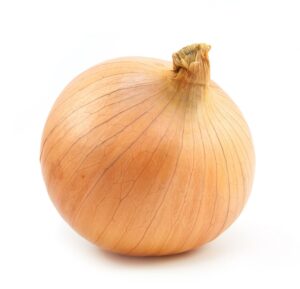 Sweet Onions:
Sweet Onions:
Sweet Onions have a lighter, less-opaque skin that surrounds a larger, slightly fatter body of the vegetable. They contain extra sugar (hence the name) which make them excellent for caramelizing. Their size is also ideal for making onion rings.
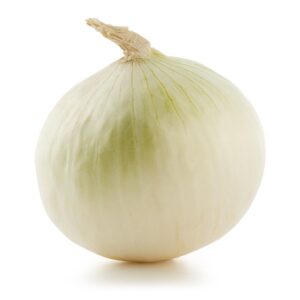 White Onions:
White Onions:
Papery white skin with a milder and sweeter flavor than their yellow counterparts. The mild flavor makes this onion preferred to serve raw in fresh salsas, guacamole and atop nachos.
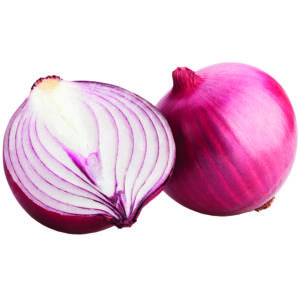
Red Onions:
Just like in the name these onions are a deep magenta color. They are mild and sweet enough to eat raw. If you chill in ice cold water for 20 minutes before serving or rinse them under cool running water, it will soften the taste even more! These are a popular option raw in salads or as a garnish.

Shallots are smaller, have a purple flesh and brown skin. Containing a pungent garlicky smell and flavor they are aromatic which helps building flavor in sautéed dishes, stock, and sauce.
 Green Onions:
Green Onions:
These are immature onions that haven’t yet formed a bulb, only partially. The entire plant is usually used, including the tall green shoots, which can also serve as a wonderful garnish. These onions go by many names such as: scallions, spring onions, cebollitas, salad onions and even-shallots.
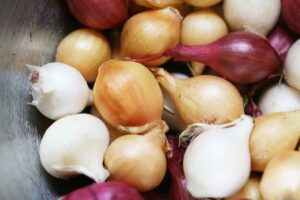 Pearl Onions
Pearl Onions
Like a pearl these onions are very small and can be white, yellow or red. Pearl onions contain a delicate, sweet flavor and are often served as pickled or as a garnish. Additionally, they can be stewed, creamed, roasted or glazed.
 Leeks:
Leeks:
Resembling an overgrown scallion, leeks are related to garlic, chives, shallots, and onions. This is evident in their flavor profile making them sweet. Typically, they are used for sauces, soups and pastas.
Storage
Dry onions can be stored for several months. Whole onions should be stored in a cool, dry, well-ventilated place, where they will last for about 4weeks. Onions absorb moisture so it is best to avoid storing beneath the sink or in the refrigerator. Often Partial onions remain after the preparation of a meal, and easily stored for reuse. For longevity wrap in plastic or place in a tightly sealed container. Container can be placed and refrigerated for up to 4 days, spring onions can be refrigerated in water for over a week.
Furthermore, sprouting onions can be eaten after chopping away the green portion.
Check out this YouTube video on how to store onions for up to 10 months!: Amazing! How We Store Onions 10 Months! 42 Million Pounds Of Onions, Episode 3 Owyhee Produce – YouTube
In conclusion, these nutrient-packed vegetables contain powerful compounds that may decrease your risk of heart disease and certain cancers alongside heightening the flavor of any savory dish. Adding more onions to your diet is an easy way to benefit your overall health. Which are you going to incorporate?
More More Information check out these pages: References: https://www.thespruceeats.com/uses-for-different-onion-types-4008831 https://www.epicurious.com/expert-advice/10-common-types-of-onions-and-the-best-way-to-use-each-article https://www.google.com/search?q=onions+cool+facts&rlz=1C1CHBF_enCA1026CA1026&oq=onions+cool+facts&aqs=chrome..69i57j0i22i30l2j0i390l3.2936j0j4&sourceid=chrome&ie=UTF-8 https://www.stylecraze.com/articles/amazing-health-benefits-of-onions/







